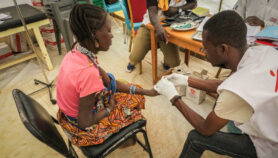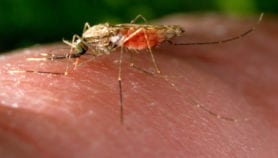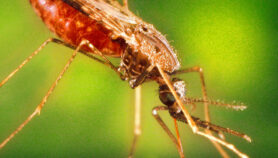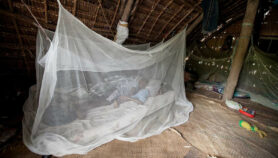By: Inga Vesper
Send to a friend
The details you provide on this page will not be used to send unsolicited email, and will not be sold to a 3rd party. See privacy policy.
Middle-income countries have reached a level of wealth and urbanisation comparable to that of European countries when they wiped out malaria last century, researchers say, offering hope of rapid global progress against the disease.
Housing, healthcare and lifestyle improvements in more-affluent developing nations could soon lead to huge drops in the disease’s prevalence, they suggest in a paper published today in the Malaria Journal.
Malaria was common in central Europe until the 1920s and 1930s (see map), but was then eliminated by a combination of factors outlined in the paper. These included active efforts to target the mosquitoes that transmit the disease, such as insecticide spraying and draining wetlands, but the success was also closely related to better healthcare and changes in how people lived, the paper says.

Map showing malaria endemic countries in Europe.
For example, the construction of enclosed, warmer stables as farming communities developed meant that mosquitoes, which prefer warm and moist environments, changed their biting habits from humans to animals, the authors found.
Mosquitoes also do not like to fly far from the ground, so better-sealed housing, urbanisation and first-floor sleeping areas caused rapid declines in malaria even in areas without active elimination efforts, they say.
“It was really GDP growth, wealth and urbanisation that were strongly associated” with malaria’s disappearance, says paper coauthor Andrew Tatem, a geographer at the University of Southampton in the United Kingdom. “Economic development will be a big help for developing countries. The trends are in their favour.”
But Tatem says this does not mean that active efforts to combat malaria are worthless, as shown by the part European governments’ united push in the mid-1920s played in eliminating malaria. The disease even got its name from the term ‘mala aria’, meaning bad or sickening air in Italian.
Some developing countries are now seeing dramatic falls in malaria cases.
Swaziland, for example, saw malaria cases decrease by 99 per cent between 2000 and 2014, with only 600 cases reported last year. The country has an active malaria control programme, but also made huge strides in economic development and urbanisation over the same timeframe.
However, climate does work against developing countries, which are mostly located in the global South, says Tatem. The breeding season for malaria-carrying mosquitoes in Europe was generally confined to the summer months, whereas they can hatch all year round in tropical countries, making it harder to curb malaria transmission.A. C. Dhariwal, the director of India’s National Vector-Borne Disease Control Programme, also sounds a note of caution in an editorial he cowrote about malaria and economic development in India. He said that some activities associated with economic development, such as dam construction, can actually increase malaria incidence in affected regions.
“There is historical evidence that achievement against malaria is often fragile and any kind of complacence may lead to resurgence at any time,” the editorial says.
References
[1] Xia Zhao, David L. Smith and Andrew J. Tatem Exploring the spatiotemporal drivers of malaria elimination in Europe (Malaria Journal, 4 March 2016)
[2] Gabriel Gachelin and Annick Opinel Malaria epidemics in Europe after the First World War: the early stages of an international approach to the control of the disease (História, Ciências, Saúde-Manguinhos, 2011)
[3] A. C. Dhariwal and others Socioeconomic dimensions of malaria and India’s policy for its control and elimination (The National Medical Journal of India, 2013)














